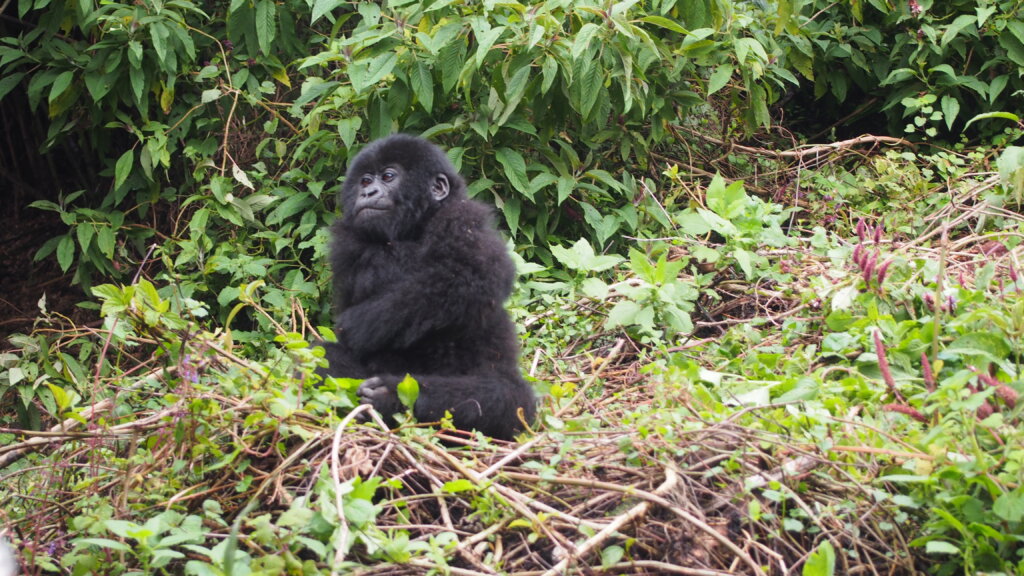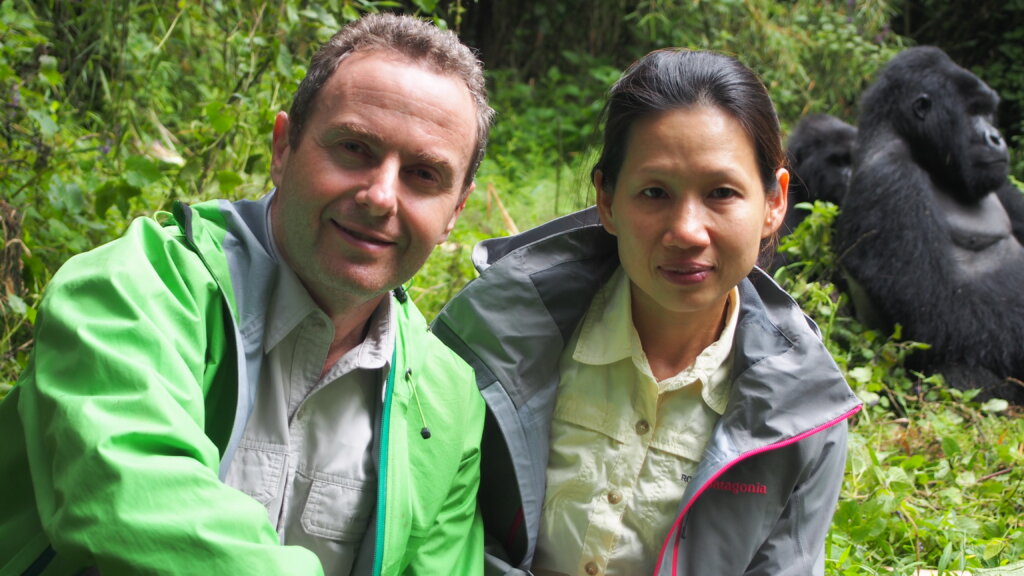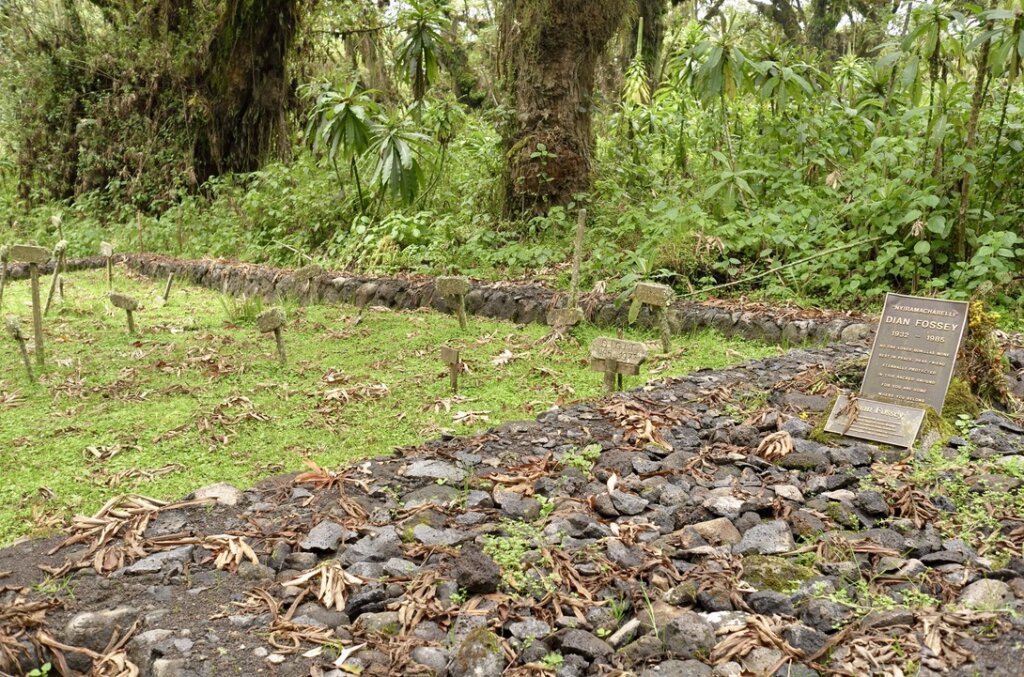Each volcano of the Virungas plays host to two or three gorilla families.
The first Silverback we see makes a dramatic entrance. He appears suddenly from the top of the hill in an explosion of breaking bamboo and swinging vines. Much bigger than we had imagined, with his white back shining in the sunlight.
There are only about one thousand mountain gorillas left in the world, all of them living in the Virunga volcano chain between Rwanda, Uganda and the Congo. The gentle giants tolerate us among them as they go about their day – the adults chomping on bamboo shoots and the babies playing and comically thumping their chests.
The huge apes are uncannily human in their behaviour, and when one of them turns around and stares, it feels as if they are looking deep into our souls.
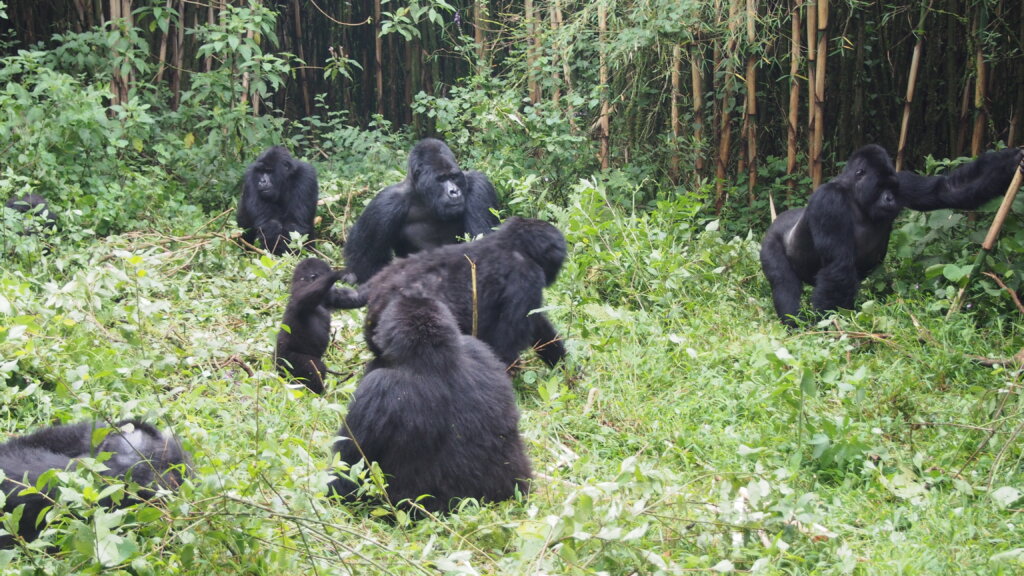
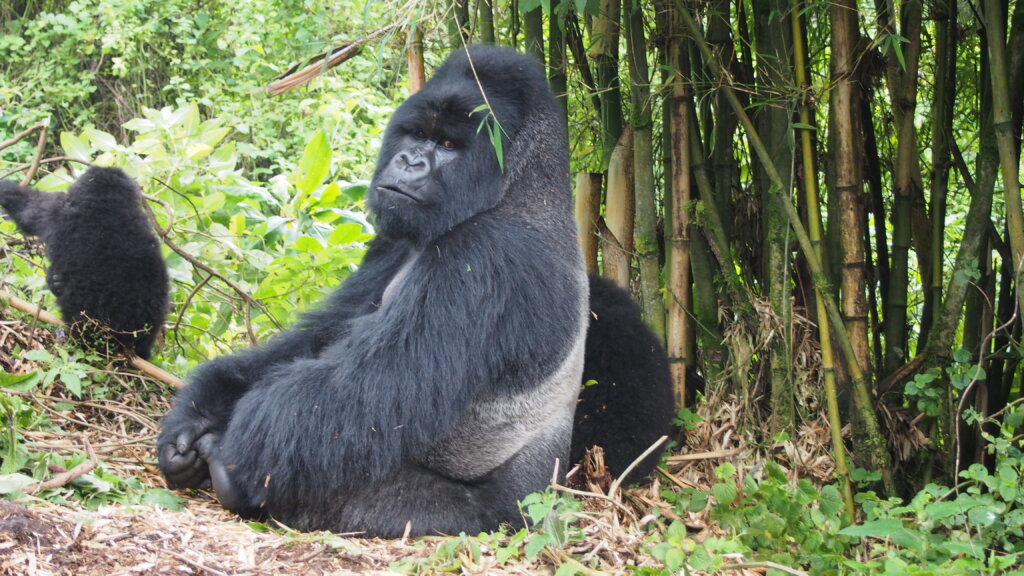
There are ten habituated groups in the Parc des Volcans, on the Rwandan side, including the original four groups studied by Dian Fossey. Each group is headed by a Silverback, a mature gorilla whose back fur has turned to silver. The eldest Silverback is always in charge and, unlike what happens with chimpanzees, he does not get challenged by the younger ones. These either bide their time until the leading Silverback dies to succeed him – or they leave the group to try to form a new one elsewhere.
We visit with two families, the Hirwa and the Sabinyo groups, the latter headed by the world’s largest known Silverback, Katonda, who weighs 220kg. Spending time with the gorillas is strangely addictive – and it is hard to leave them
